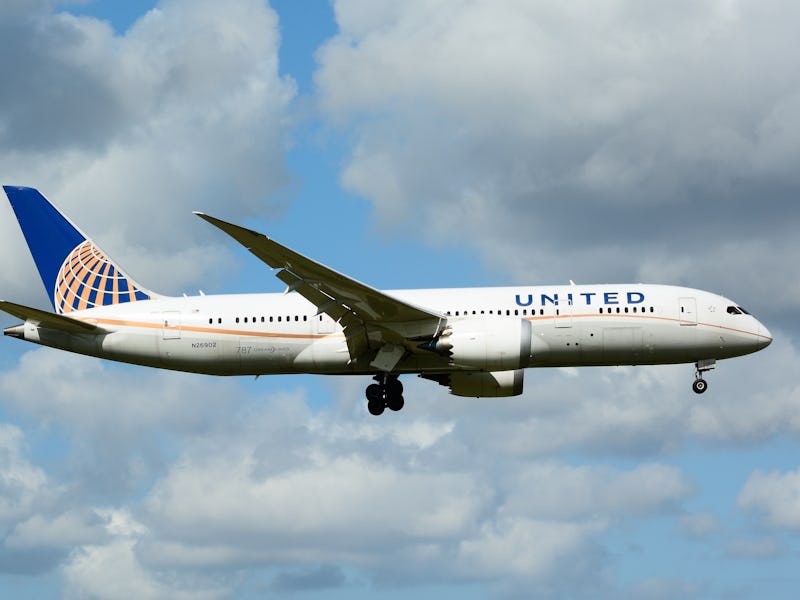Donald Trump Takes Credit for Statistical Fluke of Zero Air Travel Deaths
Also, U.S. aviation has been death-free for nearly a decade.

2017 was the safest year ever to fly anywhere in the world, according to a study released Monday. There were only two fatal commercial air accidents worldwide last year, which the report itself says was a combination of globally strong safety standards and a bit of a statistical fluke. Some welcome good fortune amid last year’s general awfulness.
Speaking of which, President Donald Trump has a pretty good idea who is responsible for this remarkable record: President Donald Trump.
“Since taking office I have been very strict on Commercial Aviation,” Trump tweeted Tuesday. “Good news - it was just reported that there were Zero deaths in 2017, the best and safest year on record!”
It’s only by the standard of Trump’s previous tweets that we say this isn’t even that wrong, in that it’s only incorrect in about three fundamental ways as opposed to completely bullshit. Well, his bit about being “very strict” on commercial aviation probably fits in that category, given his only significant aviation-related move of 2017 was promising to privatize air traffic control, which would likely make things less strict for commercial airlines, not more, and his general push for deregulation includes some proposed changes to Federal Aviation Administration rules. In neither case has anything concrete happened yet, though.
But leaving aside that bit of depressingly routine presidential chest-thumping, let’s consider the heart of the tweet, which is that “it was just reported that there were Zero deaths in 2017, the best and safest year on record.” There at least is recognizable citation for this particular presidential claim: The Netherlands-based aviation consultancy to70 published its annual review of air safety on Monday.
It found that there were just 111 accidents in 2017, only two of which — both involving smaller turbo-prop planes — resulted in deaths. Only 13 people died in commercial air travel in 2017, or about one fatal accident per 16 million flights.
President Trump at an appearance at a Boeing plant in South Carolina in 2017.
You will probably notice 13 deaths is not the same thing as zero deaths. Here we need to disentangle two things Trump has conflated: Global air safety, which the to70 study considered, and American air safety, which Trump is claiming his strictness is responsible for. Last year’s two accidents happened in Angola and Russia respectively, meaning Trump is technically correct to say zero deaths occurred in 2017 in the context of American commercial air travel.
But that’s missing a pretty basic bit of context: There hasn’t been a fatal air crash in the United States since the first month of Barack Obama’s first term. Colgan Air Flight 3407 crashed on February 12, 2009, while en route from Newark to Buffalo, killing all 50 people aboard.
The U.S. has since been accident-free. If Trump’s self-proclaimed “strictness” was responsible for 2017’s sterling safety record, then Obama’s corresponding policies deserve at least equal credit for keeping the commercial skies safe for almost his entire eight-year term.
That, however, misses a key point of the to70 study, which is that the number of deaths or total fatal accidents isn’t an especially good metric for judging air safety as a whole. Generally strong safety standards worldwide kept the accident rate low enough that it was within the bounds of random variation for just 13 people to die in crashes last year, but 2017 wouldn’t have been meaningfully less safe if, say, 300 people had died in a few more crashes.
“Statistically speaking, in a dataset that starts with over thirty million flights, there is little difference between two accidents and ten accidents,” the group writes. “That this year’s accidents only resulted in 13 fatalities is even greater fortune.”
Take 2016, for instance: to70’s review for that year found there were actually 40 fewer crashes than this past year, but 271 people died in seven fatal incidents among those 71 crashes. Again, in the context of millions of total flights, it isn’t really statistically meaningful to say 2017 was more or less safe than 2016. Yes, 271 feels like a lot more than 13, but those are just variances of luck.
Still, both years speak to how constant improvements to aircraft technology and a global commitment to civil aviation safety have kept the number of crashes historically low, including almost nine years without a fatal accident in the United States. If Trump wants to keep it that way, he would probably do best to continue not doing any of the things he has promised to do with civil aviation.